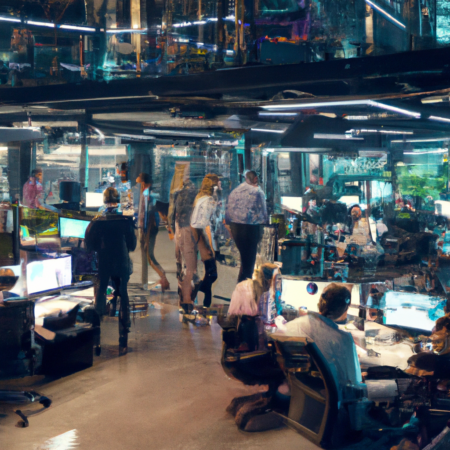Navigating the Future of Work: Trends & Strategies for 2025
The landscape of work is evolving rapidly, driven by technological advances, cultural shifts, and global events. As we step into the second quarter of 2025, it’s crucial for businesses and individuals alike to stay ahead of these changes to thrive in the new economic environment.
Key Trends Shaping the Future of Work
Several key trends are currently shaping the future of work. These include the rise of remote and hybrid work models, the increasing use of artificial intelligence (AI) in the workplace, and a greater emphasis on employee well-being and flexibility.
- Remote and Hybrid Work: The pandemic accelerated the adoption of remote work, and this trend continues to evolve. Companies are now looking at hybrid models that combine remote and in-office work to provide flexibility and maintain productivity.
- Artificial Intelligence: AI is becoming a crucial part of many businesses, automating routine tasks and providing insights that drive strategic decisions. Its role is expanding into areas like HR, customer service, and more, fundamentally changing how work is done.
- Employee Well-being: Organizations are increasingly prioritizing the health and well-being of their employees. This includes flexible working hours, wellness programs, and support for mental health.
Strategies for Adapting to the Future of Work
To effectively navigate these changes, organizations need to adopt certain strategies. These include investing in technology, fostering a culture of continuous learning, and embracing a flexible organizational structure.
- Invest in Technology: To remain competitive, companies must continuously update their technology stack to support efficient remote work, enhance security, and leverage AI-driven analytics.
- Continuous Learning: With the rapid pace of technological change, fostering a learning culture is essential. Employees should be encouraged to update their skills regularly through training and development programs.
- Flexible Organizational Structure: A more fluid organizational structure can help businesses remain agile and responsive to changes. This might involve more cross-functional teams and less rigid hierarchal lines.
Conclusion
As we move further into 2025, the future of work looks both challenging and exciting. By understanding these trends and implementing effective strategies, businesses and workers can position themselves for success in an ever-changing world.






